   |
Because He Cares |
   |
Because He Cares |
| ADDICTION STORIES SEE THESE PERSONAL STORIES FOR THOSE WHO HAVE LOST LOVED ONES |
| Teen
support hopes to inform Teens to Youth related issues in the area crisis
intervention, grieving, suicide, alcohol, drugs, bullying, abuse etc...... PLEASE SEE Subject Locator Index FOR MANY ARTICLE DESCRIPTIONS TEEN CONNECTIONS - 2 |
Safety and Security at Home Most parents worry about how to let their children participate in online activities while maintaining their safety online and at home. In today's technologically advanced world, teaching kids how to safely navigate the internet is as necessary as teaching them how to safely cross the street. Read on to learn more about how you can help your children learn to safely navigate the online world, from internet safety, social media use, and everything in between. Internet safety Digital citizenship |
|
Across Canada, more than 30,000 people have died from toxic drug poisoning since 2016. In small towns and communities, the risk of overdose is much higher than in urban areas, because of a lack of harm reduction services and stigma about substance use. In this podcast, you will hear people in Cranbrook, Prince George, and Chilliwack in B.C., as well as Medicine Hat and other parts of Alberta interviewing one another about their loved ones and grief. The podcast is part of a community-based study facilitated by Aaron Goodman, Ph.D, faculty member at Kwantlen Polytechnic University in Surrey, B.C., and students Jenna Keeble and Ashley Pocrnich Unsilencing Stories |
|
Recognizing and Intervening in Emotionally Abusive Teenage Relationships he line between romantic and unhealthy behavior is constantly blurred by television and movie portrayals. Actions telegraphed as adoring or lovingly persistent can actually be emotionally abusive and could make it more difficult for teenagers to recognize those tendencies in their own relationships. Is the power imbalance between the lead and the contestants on The Bachelor unhealthy or just part of the innate structure of the show? In Twilight, Edward reads the minds of everyone surrounding Bella in order to know what she is up to: Is that stalking, or is it supernaturally aided adoration? Even when television is explicit about the abuse, it does not make the character immune to romanticization. Penn Badgley, who plays the stalker and serial killer Joe in Netflix’s You, had to remind fans on Twitter that his character is a murderer, not an overly caring boyfriend. When visible relationships romanticize unhealthy tendencies, how can teenagers learn to see the signs themselves? This article is for informational purposes. If you are experiencing domestic or dating violence, please reach out to a professional, or call the: |
|
Security and Yor Phone However, while phones and their corresponding apps give us so much, they also expose us to risks. As so much of our world is now online, it means we are more exposed than ever to digital theft and other malicious online activity. Most people think cybersecurity doesn’t apply to phones, but this is outdated logic. When phones were first introduced, few hackers spent time targeting them. There simply weren’t enough devices for it to be profitable, but now that everyone has a phone, hackers have upped their game. To make sure you’re properly protected, we’ve put together this guide that outlines all the risks you face and how to keep you and your phone safe and secure." |
|
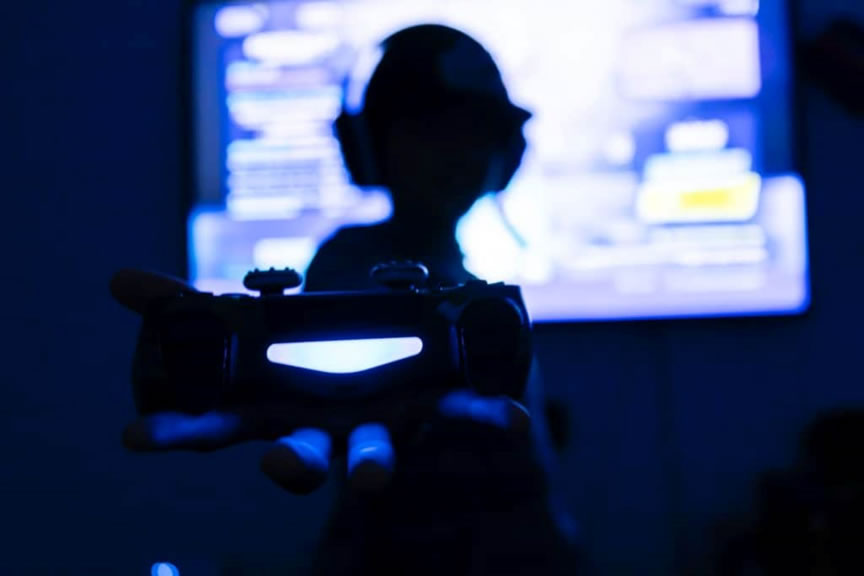 Understanding Video Game Addiction This article doesn’t have all the answers. It doesn’t even cover all the questions (although it tries), but we hope that after reading it, you’ll be able to better appreciate the issues and concerns around video gaming addiction. Whether it’s a real thing is probably as good a place to start as any… |
|
Delphi Behavioral Health Group Even with everything we’ve taught them, they might succumb to peer pressure in an attempt to fit in with their friends who are experimenting with drugs and alcohol. Experimentation is common in children and young adults, whether with drugs or alcohol or other things, but what happens when it moves past that point? Are there early warning signs for addiction in children? Substance use in children and teens has a substantial impact on their health and well-being and may cause problems later in their lives, such as addiction. The American Academy of Pediatrics (AAP), along with the U.S. Centers for Disease Control and Prevention (CDC), recommends screening for substance use in children as young as nine years of age. Starting early can help curb potential addiction later in their lives. Substance Use Statistics Among Children And Teens The U.S. Centers for Disease Control and Prevention (CDC) released figures showing that about two-thirds of students have tried alcohol by 12th grade. Nearly half of high school students between 9th and 12th grade reported using marijuana. An estimated 40 percent of high school students between 9th and 12th grade admitted trying cigarettes, and 20 percent of 12th graders reported using a prescription medication without a prescription. Despite its legality for anyone under 12, the CDC found that children and young adults ages 12 to 20 consumed ten percent of all alcohol in the United States. Underage drinking can have harmful outcomes and is considered a significant health problem in the country. Excessive drinking is responsible for more than 3,500 deaths and 210,000 years of potential life lost for those under 21. It also cost the United States $24 billion in 2010 and caused 119,000 emergency room visits in 2013. A 2019 Youth Risk Behavior Survey interviewed high school students in the past 30 days and found that: |
|
Teenage Depression: Signs, Causes and What You Can Do Months of lockdown, virtual learning, isolation from friends, financial troubles for families, and more have taken their toll on teenagers. Studies have found that the mental health effects of the pandemic have the most significant impact on teenagers.1 This isn’t to say teenage depression is a new crisis. It has been an ongoing crisis for some time as depression rates in adolescents continue to rise. Whether you’re feeling depressed yourself and looking for answers or you’re a concerned parent, you’re not alone. There are many resources, treatments, and sources of help out there. This guide is one of them. |
|
 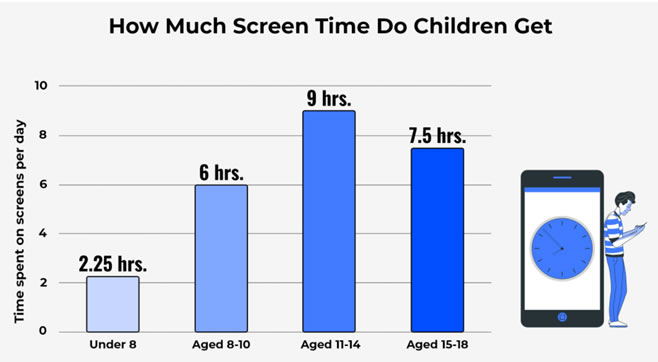 FOR MANY MORE DETAILS ON THIS SUBJECT SEE WEBSITE |
|
17 RULES TO PROTECT MY CHILD ONLINE - INTERNET SAFETY FOR KIND NAVIGATION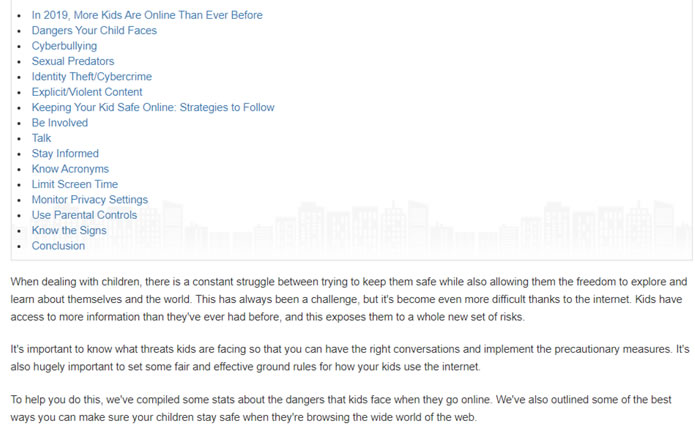 FOR MANY MORE DETAILS ON THIS SUBJECT SEE WEBSITE |
|
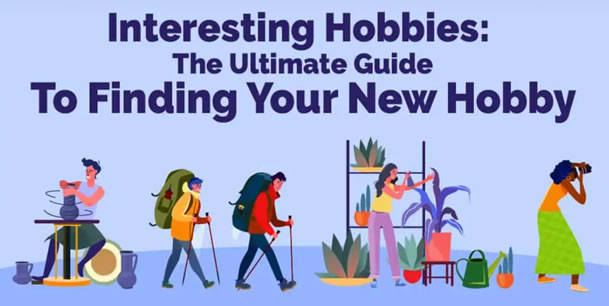 Having a hobby can come with a plethora of benefits, such as meeting new people and finding a relaxing release from a busy schedule. Hobbies are reserved for activities that are separate from your work life so that you’re not consumed with business. Overworking yourself is a cause of multiple physical and mental health issues, such as diabetes and depression. Not only are hobbies fun and entertaining, but they can also prevent you from developing serious health conditions. Children are excellent at learning new hobbies, so what happens when we grow up and stop having time for new hobbies? Some think the time constraints are too much, and others might worry about the cost that a hobby might require. However, we think that the benefits of hobbies outweigh these risks. Moreover, there are thousands of hobbies out there, all ranging vastly in different time commitments and monetary requirements. There are even plenty of free hobbies to take up! Today we’ll be looking at the benefits of picking up a hobby, how you can choose the right hobby for you, as well as a list of popular hobbies – one of which might even catch your eye. TABLE OF CONTENTS 1 Introduction 2 Why You Should Take Up A Hobby 2.1 A hobby can make you more interesting to others 2.2 Helps with stress and mental health 2.3 Social Life 2.4 Confidence and Self-Esteem 2.5 Challenges You 2.6 Gain Knowledge 3 Indoor Hobbies 3.1 Home Cinema 3.2 Gaming 3.3 Reading 3.4 Playing an instrument 3.5 Cooking 3.6 Board Games 4 Outdoor Hobbies 4.1 Hunting 4.2 Sports 4.3 Skateboarding 4.4 Target Shooting 4.5 Adventure Sports 4.6 Running 5 How To Choose The Right Hobby For Yourself 5.1 What interests you 5.2 Budget 5.3 What’s available 5.4 Friends or peers are involved 6 Conclusion FOR MANY MORE DETAILS ON THIS SUBJECT SEE WEBSITE |
|
How To Keep Your Children Safe Online: The Ultimate Guide For The Non Techy Parent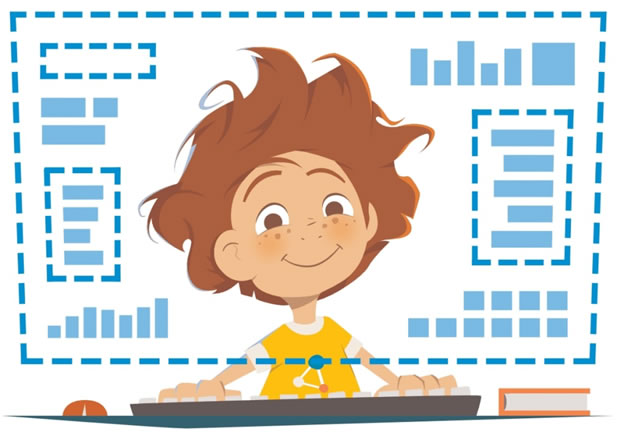 1 in 5 children who use the internet have been sexually solicited. 1 in 4 has seen unwanted pornography. Nearly 60% of teens have received an email or instant message from a stranger (half have replied.) Do I have your attention? The internet is a great place to hang out. Not only can all sorts of information be found there (some correct, some not so much), but it’s also a great way to stay in touch with friends and family. Sadly, the internet is also a dangerous place to hang out – particularly for children. Cyber stalkers, child molesters, inappropriate content, cyber bullies and more are lurking, waiting for an opportunity to reach out to your children. Such an experience could possibly damage a child for the rest of their life. In this article, I’ll share my knowledge about protecting your kids from the dark side of the internet. We’ll look at how to monitor their computer and mobile device usage, how to set parental controls to ensure they can’t view inappropriate content and much more. We’ll also take a look at what it might mean if your child suddenly closes an app or shuts off their computer or mobile device when you walk into the room. Also, we’ll discuss what to do if your child is being cyberbullied. I’ll offer suggestions about how to share the internet experience with your child and how to make sure they’re okay when you’re not around to watch. We’ll cover how to control what they can see on websites, how to manage what they can purchase and download in the popular iOS and Android App Stores, and even how to set curfews for internet use. We’ll also explore the parental controls available to you on the Windows, macOS, iOS and Android platforms. All 4 platforms offer excellent controls for parents to set limits for what apps can be used, how they can be used, and where children can go on the web as well as much more. There are a number of great third-party hardware tools available to parents today that help them monitor and control their offspring’s internet usage. We’ll look at devices that make it easy to control internet access, including a Disney-branded device that actually puts the old “man-in-the-middle” hacker attack to good use. And, kids love to watch videos on their computer or mobile device. So, we’ll also take a look at the controls YouTube and iTunes offer for parents to control what type of videos their kids can access. |
|
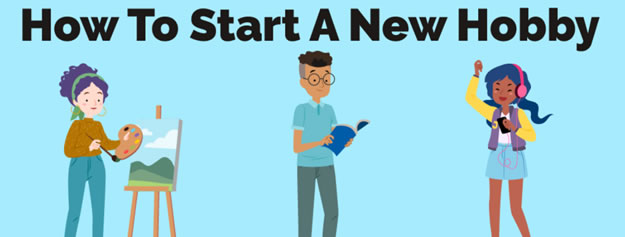 A hobby can be defined as ‘an activity or interest pursued pleasure or relaxation and not as a main occupation’. Nowadays, too many people are so focused on their work schedule that they neglect their downtime and don’t take full advantage of it. Working too much can be stressful, leading to a number of different health issues. We need to learn to accept the fact that not everything we do has to concern our career. Don’t get us wrong – bettering your career is important too, but life is all about balance. As children, we were excellent at picking up new hobbies at the drop of a hat. However, as we mature into adults, we lose interest in learning new things and forget how much hobbies could enrich our lives. Today we’re going to be looking at everything you need to know before starting a new hobby, from the benefits to the different types that you could choose from. So, if you’re ready to get out of that slump and pick up a new hobby, keep reading. FOR MANY MORE DETAILS ON THIS SUBJECT SEE WEBSITE |
|
| Scams Targeting Smartphones & Mobile Devices Knowing how to use and navigate a smartphone, tablet, or similar device is a near necessity. However, while these devices can be helpful, our reliance on them can also be our Achilles’ heel. For the sake of convenience, we use them to both store and access a bounty of sensitive information, ranging from social media accounts to banking details. Therefore, while our devices and their management capabilities can be a great boon, they also can be a liability in terms of security.  Table of Contents PLEASE SEE WEBSITE FOR ALL OF THE ABOVE CONTENT |
|
 What is Teen Dating Violence? Teen dating violence is particularly dangerous because teenagers are vulnerable and often afraid to tell a parent or a friend what is happening to them. Additionally, when you’re a teenager you have less experience with healthy relationships and can mistake unhealthy behaviors such as teasing and name-calling as normal parts of a relationship when often they are signs of unhealthy behavior. Teen dating violence typically escalates over time and can be hard for young people to identify. This is especially true for emotionally abusive relationships because psychological abuse doesn’t leave physical marks like physical violence does. |
|
Adderall Addiction & Misuse Among Teens and Young Adults |
|
Study reveals the real perpetrators of sexual assault against adolescent girls in Canada Christy Somos CTVNews.ca Writer @C_Somos Contact Published Thursday, December 12, 2019 10:59PM EST  TORONTO -- A new study of Canadian sexual assault cases shows that raising the age of consent from 14 to 16 has not led to the prosecution of significant numbers of young men for engaging in sexual relationships with younger teenage girlfriends. The study, which was published in the Canadian Journal of Women and the Law, demonstrated that the men accused in sexual offences against adolescent girls in Canada were “on average 19 years older than the complainant, and almost half of the girls reported abuse by a male family member,” according to a press release. The study argues that data collected dispels the concerns and myths surrounding the “statutory rape myth” around raising the age of consent, which was set at 16 in 2008. “The statutory rape myth refers to this idea that if we raise the age of consent to 16…then what we are doing is effectively criminalizing otherwise harmless teenage experimentation, so this idea that the criminal law will capture within it young men and teenage girls who are just experimenting with sex in non-abusive and non-coercive relationships,” said study co-author and University of British Columbia law professor Isabel Grant in a telephone interview with CTVNews.ca Thursday. Grant and fellow study author Janine Benedet examined three years’ worth of Canadian case law involving sexual offences against adolescent girls aged 12 to 17. “We looked at the cases that were being prosecuted to find out ‘are we targeting young men who fall just outside the close-in-age exceptions?’” Grant said adding that “the concern about raising the age of consent hasn’t really been verified by looking at what’s actually happening [in case law) SEE MUCH MORE HERE ON CTV NEWS |
|
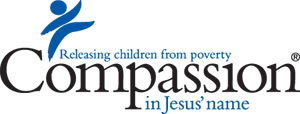 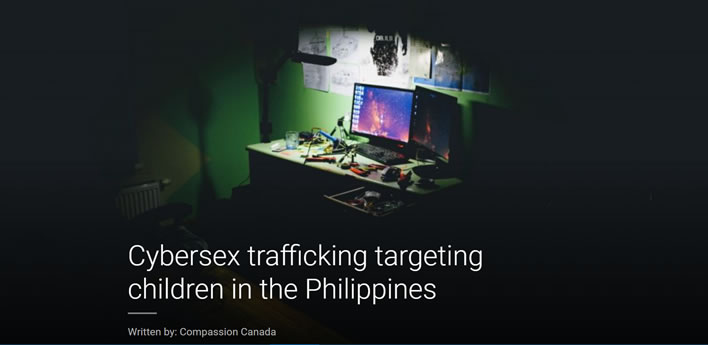 Written by Edwin Estioko with Laura Phillips - Reporting and Photos by Edwin Estioko *Warning: This account contains disturbing details of sexual violence. “How can an abused child praise God the Father, when she was raped by her own father? How can the children thank God when they are being hurt and punched in the face every day? How can they sing songs when their own mothers are taking pictures of them naked and then selling their pictures?” There’s a new kind of darkness that’s preying on Filipino children in poverty: online sexual exploitation. Online sexual exploitation, otherwise known as cybersex trafficking, refers to the act of forcing children to remove their clothes and perform unspeakable acts in front of a cell phone or computer camera. These videos are streamed to online predators from anywhere in the world in real time—in most cases, by their own parents or relatives. |
|
  PLEASE VISIT WEBSITE FOR MANY STATES GRANTS ARE AVAILABLE |
|
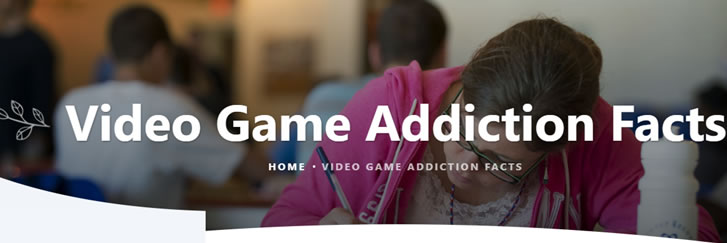 Video Game Addiction, or “gaming disorder,” was recently classified as a disease by the WHO. It is an impulse control disorder, similar to pathological gambling, which does not involve the use of an intoxicating substance. New Studies Show Video Game Addiction Leads to Mental Illness Internet video gaming involves playing online with other people. It tends to be especially addictive because most generally have no ending. Whereas, standard video games involve a single-player and a clear goal or mission to achieve. Internet video game players create and temporarily become an online character, building relationships with other online players. It is an escape from reality and for some players, it may be the place they feel the most accepted. This dissociation from reality and real-life relationships results in social isolation and detachment and notably contributes to increased depression and anxiety. The prevalence of depression, anxiety, and suicide ideations increase with along with playing time. These symptoms make dealing with video game addiction difficult. In fact, video games and depression often go hand-in-hand. |
|
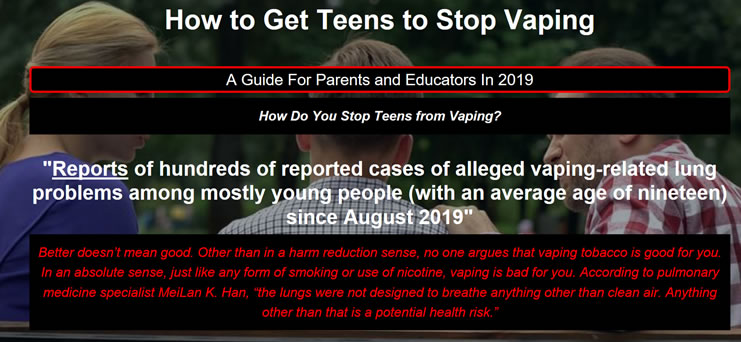 Since e-cigarettes were introduced to the United States in 2007, vaping has been touted as a safer alternative to smoking cigarettes, even by anti-smoking advocates. The inventor of the first commercially successful e-cigarette claims he was motivated by his father’s death from lung cancer. That doesn’t mean that vaping is harm-free. There are too many factors and not enough research. |
|
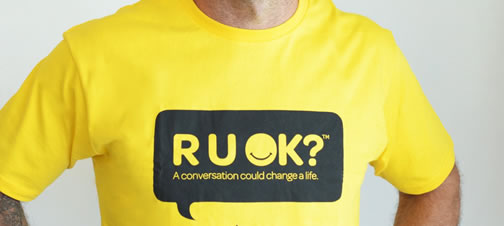 R U OK? is a movement to help remind us all to connect with one another in a meaningful way and to commit to checking in with the people in our lives who might be struggling. Simply asking someone "Are you Okay?" and taking time for them can make a world of a difference. A simple conversation can change a life. To support this movement in Canada you can buy a tshirt and wear it proudly! Please email ruok@jimyoungfoundation.com or Tony@doorsofhope.com to buy your tshirt in Prince George. Please let us know your size Small - Med - Large - XL $20.00 each plus shipping the cheapest possible way :) For more information about R U OK? visit the Australian website www.ruok.org.au or visit the Jim Young Foundation's website at www.jimyoungfoundation.com. |
|
Nick Vujicic at Telford State Prison My name is Nick Vujicic and I’m 33 years old. I was born without arms or legs and given no medical reason for this condition. Faced with countless challenges and obstacles, God has given me the strength to surmount what others might call impossible. It all started last May when I spoke to inmates at the Barry Telford Unit in Texas. Here's what one inmate told me, with tears streaming down his face... |
|
Posted with Permission from Cris Fiore |
|
Stop Enabling Your Addicted Child Surviving the Secret Childhood Trauma of a Parent’s Drug Addiction |
|
STAYING SAFE IN YOUR HOME Keeping your home safe from burglary is neither an expensive nor a difficult process. It ultimately boils down to the elimination of weak points. Most burglars will be sufficiently deterred by anything that makes their life more difficult or riskier. While your basement can be a weak point, owing to the fact that it is usually unattended at night and at a level a burglar can reach, with a few steps you can bring your basement security up to a level that will make a burglar think twice before attempting to break in. |
|
OPIOIDS AND YOUNG ADULTS The U.S. opioid epidemic worsens each year. It currently claims 115 lives every day and impacts countless families in its wake. Between 2015 and 2016, the largest opioid overdose death rate increase occurred among people aged 25 to 34 years, according to the Centers for Disease Control. Today,opioid abuse is the number-one cause of preventable death among 18-to-35 year-olds. Here, we look at opioid use among those it affects most: The Millennial generation, which is comprised of today's 18- to 35-year-olds. We examine why young adults use opioids, how addiction and dependence develop, and how exactly treatment works to help end even a severe opioid use disorder for the long-term. Table of Contents -Introduction -Why Young People Use Opioids -How Opioid Addiction and Dependence Develop -Opioid Addiction is Treatable -The Best Approach to Opioid Addiction Treatment for Young People -There is Hope PLEASE VIEW THIS GREAT WEBSITE WITH A DEEP INSITE INTO OPIOID ADDICTION |
|
The Ultimate Parent Guide for Protecting Your Child on the Internet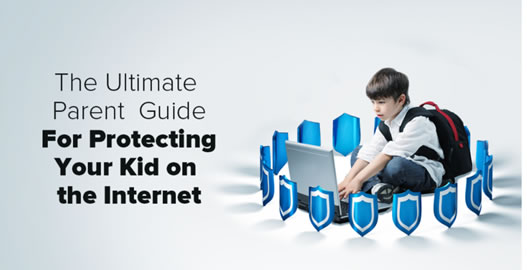 We see news stories about the impact of technology on our everyday lives all the time these days. Many of us started to think about how technology affects us personally. But how many of us have stopped to think about how it affects our children? 85% of mothers said they use technology to keep their children busy. Kids are receiving their first internet-capable device earlier and earlier. That same study showed that 83% of American households have tablets, and 77% have smartphones. Even in school, technology is abundant. Teachers set homework that requires online research and tools and use apps to manage that homework. Technology is always adapting and it’s here to stay, but many do not think about the safety risk in terms of cybersecurity. A recent study revealed a startling figure: 68% of parents never check their children’s online activity. And that online activity increases year after year. For a lot of children, the online world is more real than the real world. It is crucial to our children’s wellbeing that we understand what they see online, what is out there, both good and bad, and how it impacts their physical and emotional wellbeing. The problem, as many of us would eagerly admit, is that we feel we don’t really understand the online world. Instagram, Snapchat, and Twitter are bewildering enough, without even mentioning 4chan and TOR. Furthermore, we don’t feel that we have the technical skills to navigate this complex landscape. The good news is that it’s not that difficult to put certain technical controls in place to protect your children online. Far more importantly, the best thing you can do to protect your children is to talk to them; set clear boundaries for what and when they access online, but also to be there for your children when they make a mistake, or when they have gone too far. Isn’t that what parenting fundamentally comes down to? In this comprehensive guide, we outlined eight areas that you should pay attention to as you navigate this complex online world. Depending on the ages of your children, not all of it will apply to you. Think of it not only as guidelines for what you should do now but what you should pay attention to as your children grow. PLEASE SEE WEBSITE WITH LOTS OF GREAT INFORMATION |
|
|
ONE OF THE GREATEST HELP ORAGANIZATIONS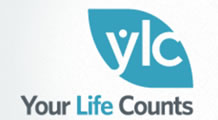 NEED HELP - GO HERE Welcome to Your Life Counts. We are real, caring people who know what it feels like to struggle with the overwhelming pressures of life at the toughest times…because we’ve been there too. Reaching out for help is often the most difficult thing to do when you’re feeling low… but no matter what you’re going through, the Your Life Counts Online Lifeline is available to you at no cost. It's a safe place for you to share your worries / concerns with us confidentially and anonymously as you feel comfortable… we’re here to listen and respond to you one on one… we’ll take you seriously and help you as best we can. We’re here for YOU! 'We' are youth, families, general workers, academics, professionals, athletes and celebrities. Our experienced and qualified team of world leading clinicians, advisors, academics, researchers, front line responders and speakers help shape the YLC that is here for you. Don’t let go of hope. Your life is precious. Your LIFE counts. Keep going and don’t give up! We care about you! |
PLEASE SEE Subject Locator Index FOR MANY ARTICLE DESCRIPTIONS |
|
Online ‘Sextortion’: Don’t let shame prevent you from reporting
|
|
| Cyberbullying and cyberstalking among Internet users aged 15 to 29 in Canada Almost 1.1M young people hit by cyberbullying, cyberstalking Please See PDF File Study Released December 19-2016 You Can Also Go To Statistics Canada Website
|
|
A GREAT WEBSITE WITH LOTS OF HELPFUL INFORMATIO - SEE HERE |
|
Statistics Canada - CHILDREN & YOUTH |
|
YOUTH CRISIS LINE Northern BC 250-564-8336(teen) or 1-888-564-8336 (teen) Or Go to |
Youth Against Violence Line - BC |
GET HELP CRISIS CENTRE BC If you or someone you know is having thoughts of suicide, call 1-800-784-2433 (1-800-SUICIDE), or call your local crisis centre. The phone lines below are available in over 140 languages using a language service. Let us know which language you require, and we will try and provide an interpreter. Contact us: Anywhere in BC: 1-800-SUICIDE (1-800-784-2433) Crisis Lines in BC - Crisis Lines in Canada Are you in Crisis? Feeling suicidal? Is someone you know feeling suicidal? |
|
PLEASE SEE Subject Locator Index FOR MANY ARTICLE DESCRIPTIONS |
|
Royal Canadian Mounted Police |
|
Is Your Teen Stealing Your Prescription Drugs? |
|
 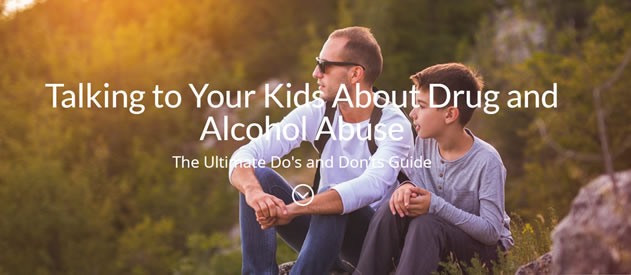 DON’T assume your child already knows the dangers of drug and alcohol use and abuse, or that they could never fall victim. A lot of kids think that you can only become addicted if you use a lot of a substance or use it repeatedly, but for some, all it takes is a single taste. Make sure your child understands that risk, and never brush off an instance of his or her using as a fluke. THE TREE HOUSE WEBSITE |
|
 What exactly is an intervention, and why should I have one with my child? SEE PDF FILE |
|
| Is Your Home an Accomplice for Your Rebellious Teen? - by HomeAdvisor Your teenager may very well know more about the Internet than you do. Many filters are ineffective as Internet-savvy teenagers can use a web proxy to circumvent these restrictions. In fact, your teenager may be using your home computer to circumvent restricted websites at school. Worse yet, unsafe web traffic is a constant danger. Dangerous persons may be trying to lull your kid into meeting face-to-face through a growing number of social networking sites. Disturbingly, even some pornographic websites advertise ways of meeting other users in the real world. Meanwhile, cyber-based con-artists have set up online scams, including ways of stealing your identity. By calling in a computer professional, you can make sure your computer has the most advanced safeguards, including an evaluation of lingering vulnerabilities, and new ways of tracking your PCs online activity. SEE WEBSITE HOME ADVISOR For Much More |
|
 Dangers of Bullying - Bullying is not harmless |
|
Bullying
|
|
TEEN-KIDS HELP |
What is BroTalk? BroTalk is a free, confidential and anonymous service that provides counselling and information to help teen guys (and those who identify as male) tackle their challenges and stresses, big or small. Whatever you’re dealing with, you don’t have to face it alone. Chat or Phone, we’re here to support you.  SEE BroTalk SEE BroTalk |
 Bully B'ware Productions Inc - 6 Bedingfield Street Port Moody, BC, V3H 3N1 - Canada Toll Free: 1-888-552-8559 - Website Email info@bullybeware.com |
SOS Society - Surpassing Our Survival Sexual Violence Prevention and Counselling Services 193 Quebec Street Prince George, BC V2L1W1 - Canada ph: 250-564-8302 Website |
PLEASE SEE Subject Locator Index FOR MANY ARTICLE DESCRIPTIONS |
|
| Road To Healing Restoring Hope Suicidal? Call 1-800-273-825524/7 Lifeline ~ ChatHearing/Speech Impaired TTY Equipment: 1-800-799-4TTY (4889) WEBSITE A GREAT ORGANIZATION WITH A LOT OF RESOURCES |
Royal Canadian Mounted Police A Great website with multiple resources Bullying and Cyberbullying |
 Is a registered national charity and Canada-wide anti-bullying program developed in 2009 by B.C. teacher Trevor Knowlton, which allows any student who is a victim or witness of bullying and cyberbullying to be able to safely report the details to school officials. Any student, at any school in Canada, can use this reporting service which is provided at no cost to all students and schools. The Stop A Bully program helps increase bullying awareness & accountability within schools to allow officials to be more proactive in preventing serious incidents of bullying. Stop A Bully provides schools with critical information to be proactive in assisting all students who are witness, target and perpetrator of school bullying. |
Erase Bullying for Youth - Parents What is bullying? Simply put, bullying is a pattern of unwelcome or aggressive behaviour, often with the goal of making others uncomfortable, scared or hurt. It’s almost always used as a way of having control or power over their target, and it is often based on another person’s appearance, culture, race, religion, ethnicity, sexual orientation or gender identity. All incidents of bullying are serious and need to be addressed. As you’ll discover in this section, the impact bullying has on the victim and the bully is very serious. See ERASE BULLYING |
| Crisis Pregnancy Centre 250 - 562-4464 |
Safety for Teens and
Children Vancouver Police Bullying Information |
| xxxxxxx The Canadian Association for Suicide Prevention 
The Canadian Association for Suicide Prevention (CASP) provides information and resources to reduce the suicide rate and minimize the harmful consequences of suicidal behaviour. |
|
| KEEP KIDS SAFE - Ministry of Education
BC & Much Other Information ALSO SO SEE Child Abuse - Family Violence - Kids Safe - Legal Aid |
I You Have any Suggestions Please Email Me |
| Young Workers You're under 25. And you're eager to work and contribute your ideas. Did you know that you have rights protecting you against workplace health and safety hazards, and to ensure that you are treated fairly? Employers and supervisors have duties under the law to protect you. Check out our resources below to learn more about your rights and responsibilities on the job. |
 USA |
PLEASE SEE Subject Locator Index FOR MANY ARTICLE DESCRIPTIONS |
|
Al-Anon AlaTeen PLEASE SEE WEBSITE FOR FULL DETAILS - ALANON - TEEN CORNER BC CHAPTERS |
|
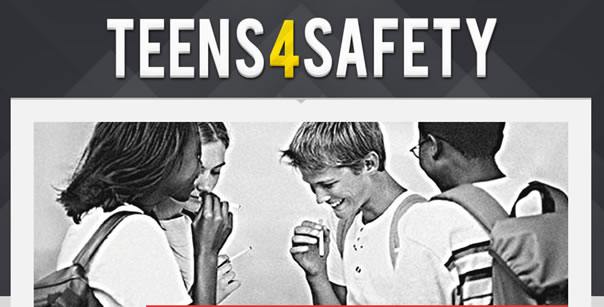 Talking to their kids about drugs and alcohol Addiction Treatment Guide Driving Safety With Deer On the Road Teens Drinking and driving: The truth Texting While Driving AND MUCH MORE TO VIEW ON TEENS4SAFETY ON THEIR WEBSITE |
|
Teens, Addiction, and Suicide: Facts and Tips for Helping Addicted Youth Being a teenager is difficult under any circumstances, but being a teenager who has an addiction to drugs or alcohol is even more difficult. Understanding why teens turn to drugs and alcohol is an important first step in helping them to avoid suicide, because many of the underlying causes of drug or alcohol abuse involve the same factors that lead to teen suicide. By helping addicted teens through the issues that cause their addiction, it is possible also to prevent their potential suicide. Facts about Teens and Addiction While it may not be a good reason, teens often abuse drugs or alcohol simply because they are teens and must handle all of the challenges that accompany the teen years: they must figure out who they are as they transition from childhood to adulthood, make difficult choices, want to experiment, and lack the experience to know which choices are going to lead to more harm than they can anticipate. And, while researchers have found that teens do not actually have the feelings of invincibility that the myth perpetuates, they do understand the risks of their behavior but believe the benefits and fun are worth the risk. The facts about teen drug experimentation and abuse are staggering: Teens often turn to alcohol and drugs because they want to self-medicate. Teens see getting high or drunk as a way to escape their problems and as a way to numb or ease their pain. They use substances to be more social or comfortable, to make life more bearable, to fit in with their peers, etc. The Link Between Teenage Addiction and Suicide Teenage suicide is the third leading cause of death for teens in the United States. One cause of teenage suicide is drug and alcohol abuse. Drug abuse intensifies teens’ depression or sadness and leads to feelings of helplessness and hopelessness. Teens also can experience a crash when they abuse drugs, and the associated physical illness and feelings of sadness contribute to depression and suicidal thoughts. The Substance Abuse and Mental Health Services Administration reports that nearly 10% of drug-related trips to the emergency room for adolescents involve attempted suicide. And, in many of these cases, access to prescription drugs was to blame. The study also found that teenage girls are nearly three times more likely than boys to attempt suicide for drug-related reasons. A study conducted by the University of Southern Illinois’ Core Institute found that “students who drink or use drugs are much more likely to have suicidal tendencies than those who do not use substances. For example, 8.15% of binge drinkers have thought about committing suicide and 2.34% report attempting suicide. Similar comparisons hold for students who drink at all, who use marijuana, and who use other illegal drugs. Only 2.34% of non-drinkers have thought about committing suicide, with only .78% attempting suicide.” Clearly, teens who use drugs and alcohol need help before they attempt or complete suicide. Tips for Helping Addicted Teens It is critical to help addicted teens receive the help and treatment they need and deserve. Professional treatment is necessary to help teens work through the issues that led to their addiction and possible suicidal thoughts in the first place. The following tips will be helpful in getting your addicted teen the help they need before it is too late. 1. Contact an addiction specialist or local drug and alcohol treatment facility for guidance in confronting your teen and determining the best treatment options. Call sooner rather than later. You can help an addicted teen work through his underlying issues and addiction if you make an effort to understand the problem and find appropriate treatment options. The key is to get help as soon as possible, before the teen resorts to suicide. Sara Bell grew up in a family of teachers—her dad has taught high school for 30 years and her mom is a university professor. At EducatorLabs, she puts the lessons they instilled in her about the importance of curiosity and learning to great use. When she isn’t working, she enjoys reading, writing, and knitting. Image via Pixabay by HannahJoe7 |
|
PLEASE SEE Subject Locator Index FOR MANY ARTICLE DESCRIPTIONS |
|
|
|
BUSTING THE MYTH ABOUT ADDICTION |
SEE WEBSITE: The Guide To Building Bridges 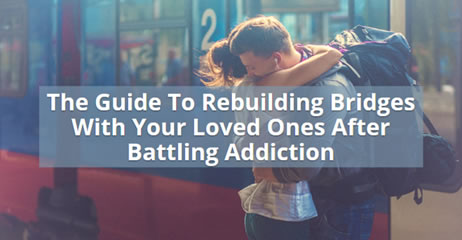 In a given year, there are 23.5 million people aged 12 and over who need treatment for drug or alcohol abuse problems, according to data from the National Institute on Drug Abuse. That’s a reported 9.3% of people in that age range. According to the CDC, 28,000 people died from opioid use in 2014. That same year, 16.3 million people aged 18 and over had an alcohol use disorder, while 24.7% of the people in the same age group admitted to binge-drinking within the previous month of being surveyed. |
How to Talk to a Child About a Parent’s Addiction
|
| As more and more seniors choose to age in place in the homes where they raised their families, there is more need than ever for all of us - regardless of age - to make sure we know how to be safe in our homes. Here are some articles on home safety that are useful for people of all generations (not just senior citizens} A to Z Guide to Security, Safety and Prevention Tips to Ensure Safety of Seniors at Home Home Construction & Design Techniques for Child Safety Have a House Fire Evacuation Plan Guide to Handling a Hoarding Spouse 20 Ways to Keep Kids Safe When They Are Home Alone How to Make Your Home Handicap Accessible Child Safety Guide: Making the Move from an Urban Area to a Rural One |
|
| Helping an Adult Family Member or Friend with a Drug or Alcohol Problem Do you have an adult family member or friend with a drug or alcohol problem? You’re probably wondering how you can help. Here are 7 answers to questions you may be asking. SEE THE 7 ANSWERS HERE |
|
PLEASE SEE Subject Locator Index FOR MANY ARTICLE DESCRIPTIONS |
|
| Cannabis Use and Alcohol Abuse How Cannabis Increases Risk of Alcohol Addiction The Key To Stopping Alcohol Addiction Is Personalized Treatment FINDING AN ALCOHOL RECOVERY CENTER THAT IS TAILORED TO YOUR PERSONAL NEEDS IS WHAT WE DO! 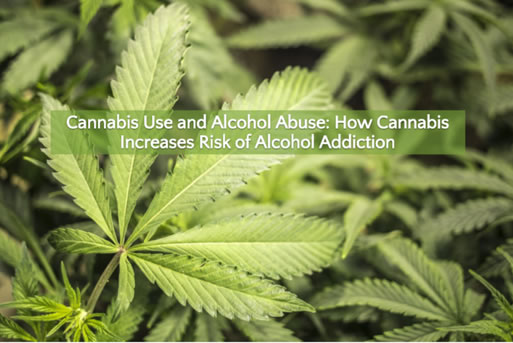 "According to Medical News Today, “Marijuana contains over 400 chemicals, with delta-9-tetrahydro-cannabinol (THC) the key psychoactive (mind-altering) substance in the drug. The possible effects of marijuana include mood changes, suicidal thinking and disruption to normal learning abilities. It may also be capable of producing dependency, psychosis and addiction.” What You’ll Find in This Guide: Evaluating Cannabis Use and Abuse in the U.S. Does Cannabis Increase the Risk of Alcohol Addiction? The Dangers of Cross-Addiction: When Marijuana and Alcohol Collide Appropriate Use Cases: Is Cannabis a Viable Treatment Option for Medical Purposes? Please go to this great website with much more information ALCOHOL TREATMENT |
|
Legal Consequences of Cyberbullying |
TEENS Bullying stops us from being who we want to be, and prevents us from expressing ourselves freely, and might even make us feel unsafe. If you are bullied, say something! If you are bullying, it’s not cool!  USA |
 USA |
BULLYING.ORG |
PLEASE SEE Subject Locator Index FOR MANY ARTICLE DESCRIPTIONS |
Over 750,000 hits have been generated since January - 2005
|